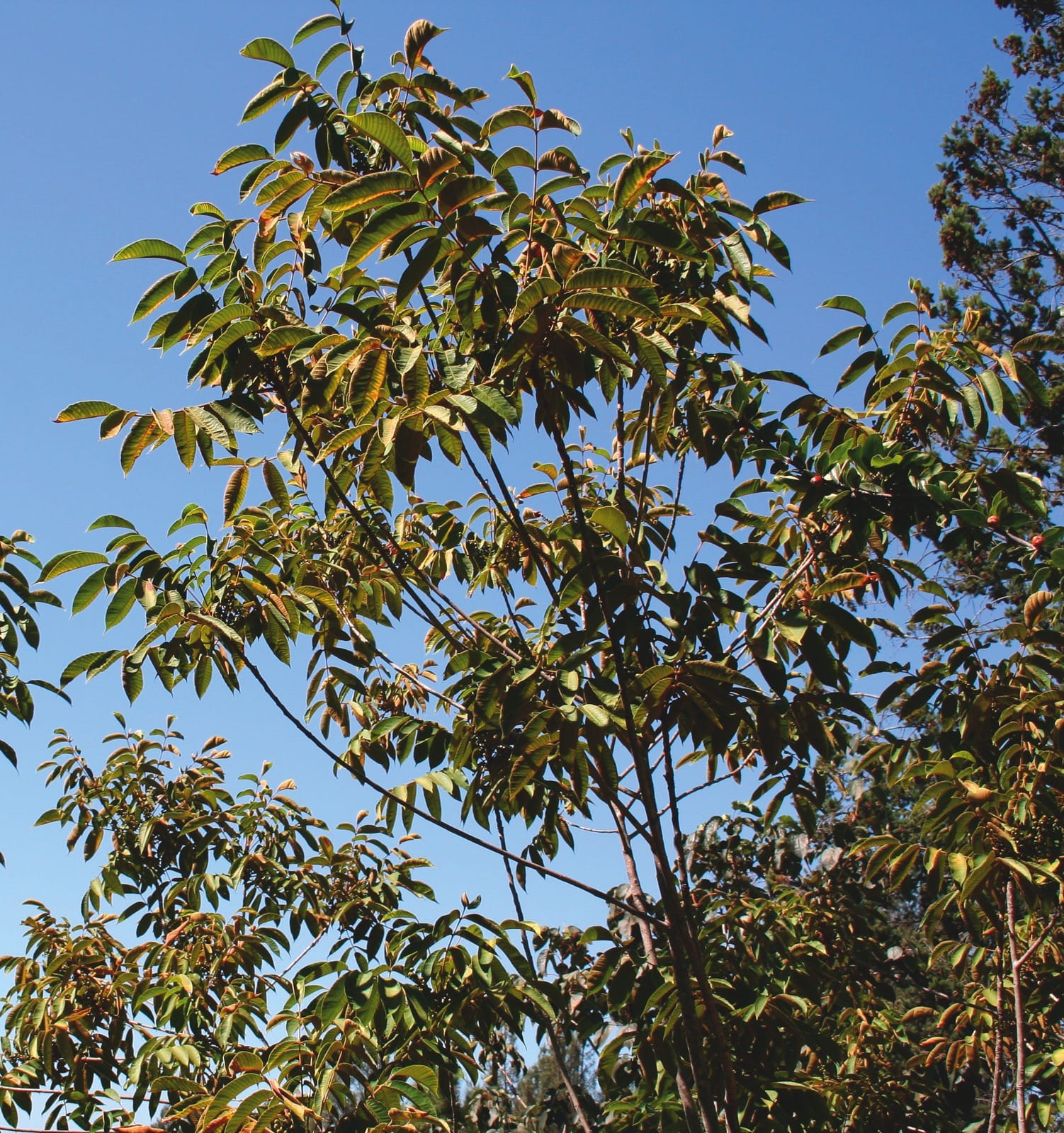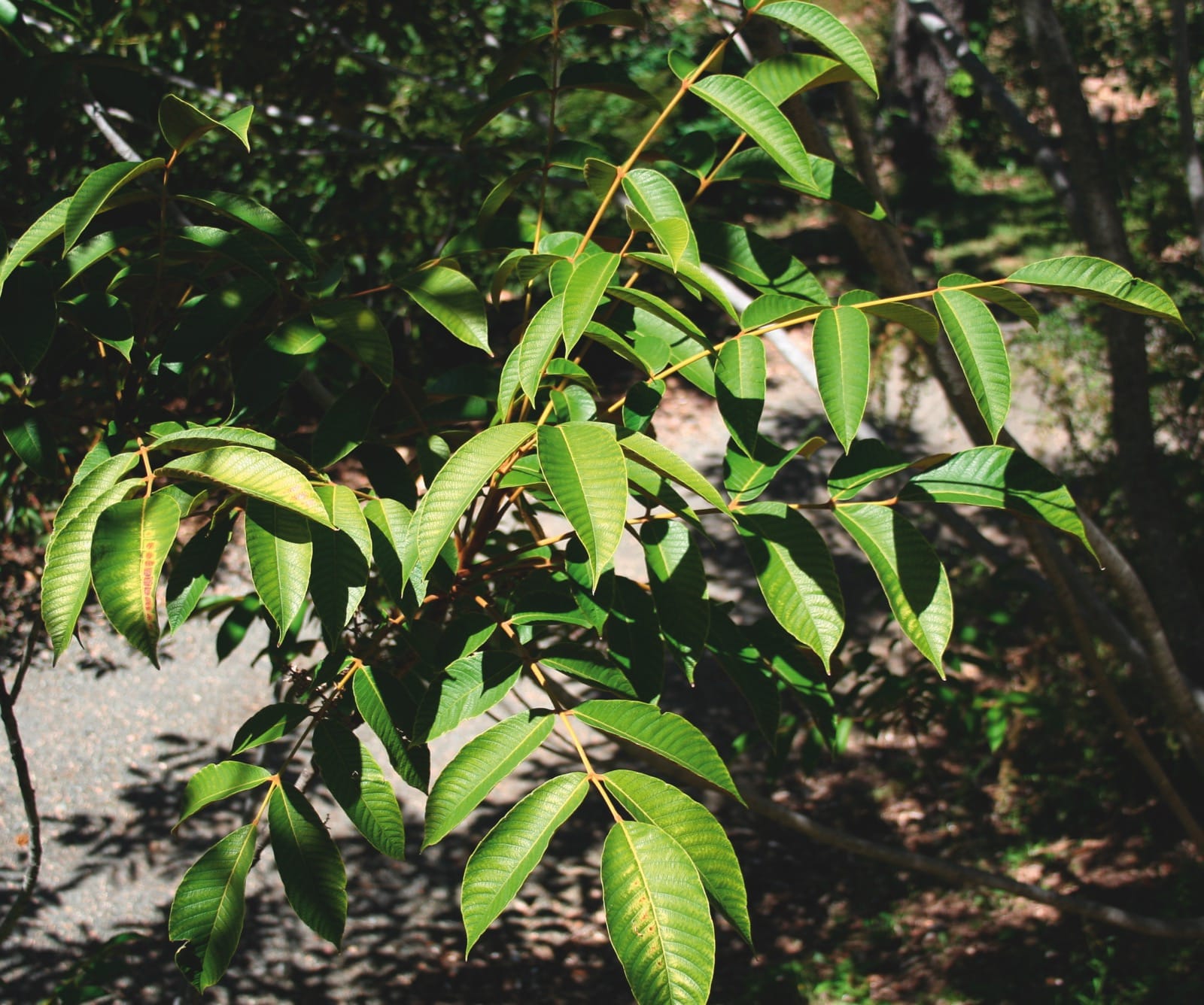Rhus wallichii
Credits
Article from New Trees by John Grimshaw & Ross Bayton
Recommended citation
'Rhus wallichii' from the website Trees and Shrubs Online (treesandshrubsonline.
Tree to 15 m. Branches sparse, robust, coated in ferruginous pubescence, ridged, with prominent leaf scars. Young stems and immature leaves densely tomentose. Leaves deciduous, 20–60 cm long, imparipinnate, leaflets 7–15, ovate-oblong, 2.7–24 × 0.4–1.8 cm, upper surface dark green, lower surface pale green and with ferruginous tomentum, margins entire, apex acuminate; rachis tomentose, without wings; petiole distinct, 8–20 cm long. Dioecious. Inflorescence an axillary or terminal panicle, densely tomentose, much shorter than the leaves. Flowers insignificant, dirty white. Fruit a globose drupe, 0.5–0.7 cm long, ferruginous, tomentose. Flowering and fruiting May to November (India). Chandra & Mukherjee 2000. Distribution INDIA: Himachal Pradesh, Uttar Pradesh, West Bengal; NEPAL. Habitat Montane forest, between 1950 and 2300 m asl. USDA Hardiness Zone 8–9. Conservation status Not evaluated. Illustration Chandra & Mukherjee 2000; NT3, NT763.
The only specimens of Rhus wallichii traced in our research are at Quarryhill, grown from seed collected by Bill McNamara in 1993 from small trees growing at 2035 m in Nepal (M 0066). When seen in 2004 they were 6–7 m tall, forming attractive multistemmed, open-crowned trees, bearing foliage only at the tips of the shoots. The multistemmed habit may in part have been caused by their having frozen to the base when young, and resprouted (W. McNamara, pers. comm. 2004). The big pinnate leaves of R. wallichii are somewhat reminiscent of those of Juglans, but the leaflets are much larger than would be expected in a walnut; they emerge a strong red in colour. The inflorescences of many small dirty white flowers are dull, but the fruiting panicles are not unattractive.


